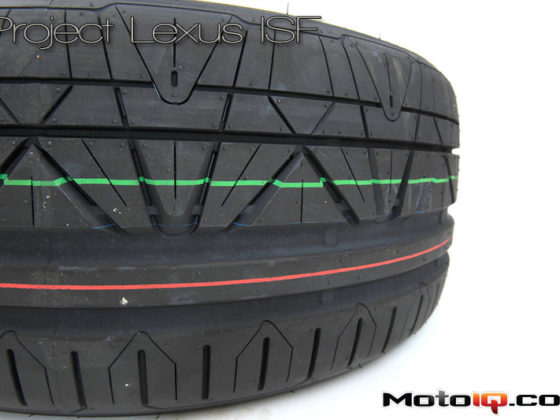
ARK Design Team America BNR32 GT-R Update
The Team America crew has been busy and the car has really come together in the past couple of weeks. The goal is to be able to have the car dyno tuned and a track test session before it has to go into a shipping container and hopefully end up in Australia this time (if you have been following our story, two years ago, instead of going to WTAC, the car ended up in China for a few months due to the freight forwarder making a huge mistake).
Eric Hsu and Gary Castillo have been working around the clock to get the car done with everyone else on the team pitching in on nights after work and the weekends. The major fabrication is nearly complete and the engine has been started and runs. What’s left is to finish up the top secret Andrew Brilliant designed aero package, the final installation of the wire harnesses, some ducting and to clean up and wrap the car to make it look cool.
Lets take a look at the car’s progress.
Read The ARK Design BNR32 Build Stories Here!
 The car has come a long way over the past couple of weeks. The plumbing has been completed and the wiring harness was in place although it had to be removed to troubleshoot. The engine would not start at first but Eric Hsu obtained some new FPGA settings from the Pectel engineers at Cosworth in the UK and the engine fired right up. Actually to verify that it was not a wiring issue, Tyler at AEM built a Pectel SQ6 to AEM Infinity adapter harness and brought it down one night. Eric was actually tempted to change the ECU to an Infinity, but there was too much that needed changing since the car’s electrical system was designed around the Pectel. Since the Pectel engineers pulled through, it was easier to continue with the Pectel. Here you can see the wheel tubs that were fabricated not to look sweet but to help control airflow around the area of the tires and engine compartment. Nearly every bit of airflow around the car is being put to work to increase downforce. Yes the probe looking thing on the roof is really a pitot tube. We will be measuring air speed so downforce can be calculated when looking at how much the suspension is being compressed vs the airspeed. It would have been nice to run strain gauges to measure force on the suspension, but the budget did not allow for them.
The car has come a long way over the past couple of weeks. The plumbing has been completed and the wiring harness was in place although it had to be removed to troubleshoot. The engine would not start at first but Eric Hsu obtained some new FPGA settings from the Pectel engineers at Cosworth in the UK and the engine fired right up. Actually to verify that it was not a wiring issue, Tyler at AEM built a Pectel SQ6 to AEM Infinity adapter harness and brought it down one night. Eric was actually tempted to change the ECU to an Infinity, but there was too much that needed changing since the car’s electrical system was designed around the Pectel. Since the Pectel engineers pulled through, it was easier to continue with the Pectel. Here you can see the wheel tubs that were fabricated not to look sweet but to help control airflow around the area of the tires and engine compartment. Nearly every bit of airflow around the car is being put to work to increase downforce. Yes the probe looking thing on the roof is really a pitot tube. We will be measuring air speed so downforce can be calculated when looking at how much the suspension is being compressed vs the airspeed. It would have been nice to run strain gauges to measure force on the suspension, but the budget did not allow for them. I am pretty proud of my department. The stock BNR32 has a really horrible archaic suspension geometry that was designed by some poor Japanese guy who thought a variable camber curve would be neato while ignoring nearly every other aspect of suspension design. The biggest problem with the stock suspension among a host of other issues is a super high roll center and a real close inboard lateral instant center. The car in its previous iteration would jack like you would not believe. Instead of just rolling the car would also rise due to the jacking. We managed to come up with a suspension geometry that fixed every issue that the stock car had leaving us with close to classic good geometry. All without overly complicated fabrication and expense while still retaining the stock knuckles. Our design would have kicked ass on the Nismo Group N front suspension back in the day. The only issue that we still had was that bump steer was somewhat compromised because there was a lot of unmovable powertrain stuff in the way of ideal steering rack location. Although I had some ideas on what to do about it, Gary Castillo came up with a total solution that is pretty fascinating. Additionally, Eric had previously had the stock BNR32 uprights machined for larger wheel bearings to prevent piston knock back.
I am pretty proud of my department. The stock BNR32 has a really horrible archaic suspension geometry that was designed by some poor Japanese guy who thought a variable camber curve would be neato while ignoring nearly every other aspect of suspension design. The biggest problem with the stock suspension among a host of other issues is a super high roll center and a real close inboard lateral instant center. The car in its previous iteration would jack like you would not believe. Instead of just rolling the car would also rise due to the jacking. We managed to come up with a suspension geometry that fixed every issue that the stock car had leaving us with close to classic good geometry. All without overly complicated fabrication and expense while still retaining the stock knuckles. Our design would have kicked ass on the Nismo Group N front suspension back in the day. The only issue that we still had was that bump steer was somewhat compromised because there was a lot of unmovable powertrain stuff in the way of ideal steering rack location. Although I had some ideas on what to do about it, Gary Castillo came up with a total solution that is pretty fascinating. Additionally, Eric had previously had the stock BNR32 uprights machined for larger wheel bearings to prevent piston knock back. We call Gary the Filipino MacGyver because he can always come up with some sort of solution to a problem using stuff found lying around the shop. Gary’s steering solution is pretty cool and is very similar to the system found on the Nismo GT-R JGTC car from around 2005 or so. It starts off with this lightweight and adjustable steering column that he fabricated from scratch. Notice that the factory firewall is still in place. Part of the tunnel was cut out to enable better access to the Holinger gearbox bellhousing. The missing section will be replaced with a sheet metal cover.
We call Gary the Filipino MacGyver because he can always come up with some sort of solution to a problem using stuff found lying around the shop. Gary’s steering solution is pretty cool and is very similar to the system found on the Nismo GT-R JGTC car from around 2005 or so. It starts off with this lightweight and adjustable steering column that he fabricated from scratch. Notice that the factory firewall is still in place. Part of the tunnel was cut out to enable better access to the Holinger gearbox bellhousing. The missing section will be replaced with a sheet metal cover. The steering shaft leads to this BMW E39 M5 recirculating ball power steering box that is bolted solidly to the firewall and frame rail. It is also tied into the cage on the interior.
The steering shaft leads to this BMW E39 M5 recirculating ball power steering box that is bolted solidly to the firewall and frame rail. It is also tied into the cage on the interior.


